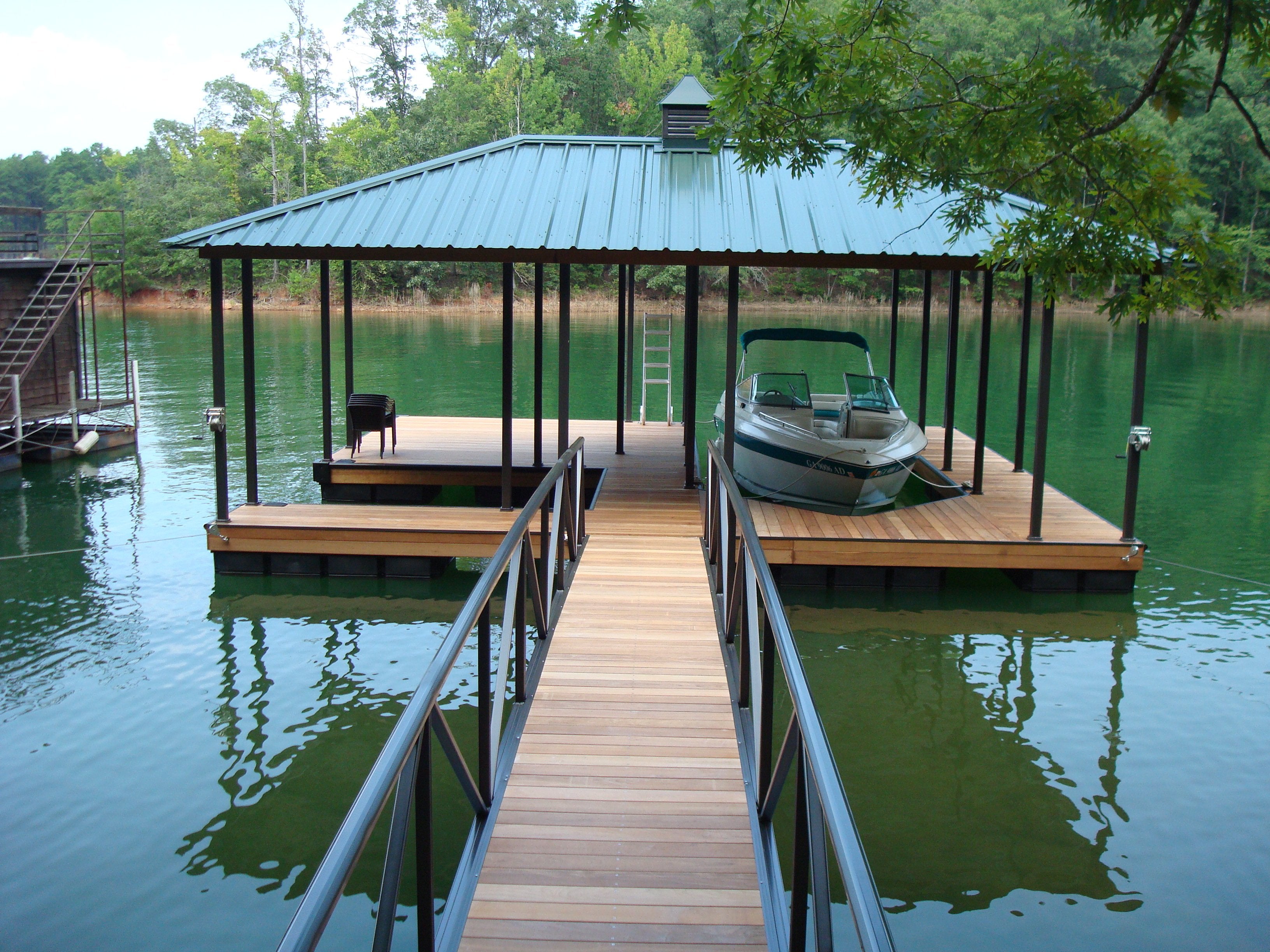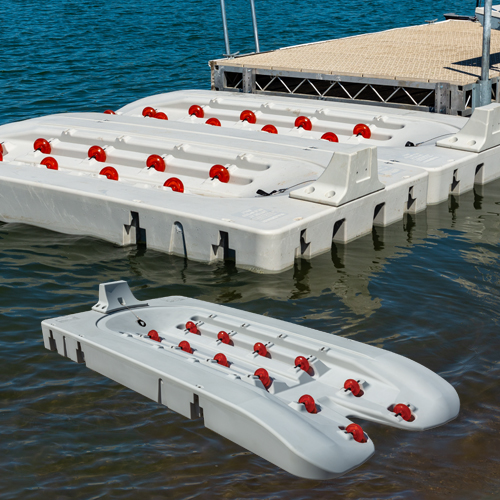Optimizing Your Outdoor Space with Specialized Floating Dock Providers
Optimizing Your Outdoor Space with Specialized Floating Dock Providers
Blog Article
Create the Perfect Docking Option With Floating Docks
Floating docks existing a flexible option for a range of maritime needs, adapting flawlessly to changing water degrees and varied vessel types. As we check out the vital components that add to the efficiency of floating docks, a number of vital elements pertaining to security and upkeep will certainly emerge, increasing questions regarding exactly how to optimize your docking experience.

Benefits of Floating Docks
Floating docks offer many advantages that make them an excellent option for various maritime applications. One of the key advantages is their versatility to transforming water degrees. Unlike dealt with docks, floating docks increase and autumn with the tide, making sure regular ease of access for vessels. This feature is specifically essential in locations susceptible to considerable tidal fluctuations or seasonal water degree modifications.
Furthermore, floating docks are usually less complicated and quicker to set up contrasted to standard fixed structures. Their modular style enables simple assembly and disassembly, helping with maintenance and moving when required. This flexibility is especially beneficial for short-term applications or in settings where conditions may change.
Floating docks additionally often tend to be much more eco-friendly, as they minimize interruption to the seabed and bordering water communities. Their resilient nature minimizes the threat of damages to aquatic life, promoting a much healthier setting. Furthermore, these docks can be customized to fit various vessel sizes, ensuring that they fulfill certain operational requirements - dock company.
Inevitably, the combination of adaptability, simplicity of installment, and ecological factors to consider makes floating docks a very efficient option for a large range of maritime demands.
Selecting the Right Materials
Choosing the suitable materials for floating docks is critical to make sure toughness, longevity, and stability. The selection of products directly influences the dock's efficiency in numerous environmental conditions, consisting of direct exposure to water, sunlight, and possible wear from marine web traffic.
Typical products made use of for floating docks consist of light weight aluminum, timber, and high-density polyethylene (HDPE) Light weight aluminum is light-weight, corrosion-resistant, and requires very little upkeep, making it an exceptional choice for longevity. Nevertheless, its initial price can be greater compared to other products.
Timber, while cosmetically enticing and providing a traditional look, can be at risk to rot and bug damage otherwise effectively dealt with. Therefore, making use of pressure-treated wood or naturally durable species like cedar or redwood can mitigate these issues.
HDPE is a preferred selection as a result of its resistance to UV rays and chemicals, in addition to being environmentally pleasant. floating dock builder. It is offered and light-weight in numerous colors, permitting for modification
Inevitably, the best material choice will depend on specific demands, consisting of budget, desired aesthetic appeals, and environmental factors to consider. Careful analysis of these aspects will cause a resilient and effective floating dock option.
Design Considerations for Security
When designing floating docks, making certain security is a basic facet that can substantially affect their performance and safety. Security in floating dock style is affected by numerous factors, consisting of buoyancy, weight circulation, and the plan of elements.
Weight distribution is crucial; uniformly dispersing tons across the dock protects against tilting and enhances security. Bigger styles can provide increased stability, specifically in harsh water conditions, while longer docks might call for added supports to avoid drooping.
One more key consideration is the ecological influence, consisting of wave action and wind. Incorporating functions such as sidewalls or skirting can aid reduce the impacts of ecological pressures, preserving security in negative problems. Inevitably, a mix of thoughtful design, product option, and understanding of environmental aspects will produce a drifting dock that meets both stability and safety requirements.
Installment Tips and Methods

Next, safeguard the required authorizations and follow regional regulations, which might determine setup methods and ecological considerations. If called for, engage a qualified specialist experienced in floating dock setups. Use high-grade products developed for marine environments to boost sturdiness and long life.
When placing the dock, straighten it identical to the shoreline to promote easy gain access to. Make certain that the anchoring system is durable, employing concrete blocks or helical anchors to maintain the dock versus wind and wave action. It's critical to account for seasonal water degree fluctuations, consisting of prospective ice motion in cooler climates.
During the installation, double-check the dock's floatation and stability prior to completing the anchoring. Consistently inspect the installation for any indicators of wear or damages. By complying with these pointers and strategies, you can achieve a safe and secure, practical, and visually pleasing floating dock installation that meets your demands.
Upkeep and Care Standards
Preserving and caring for floating docks is critical to prolonging their lifespan and making certain secure usage. Routine inspections should be carried out to identify any type of indicators of wear, damage, or marine development. Look for fractures, loose fittings, or blemished areas on the dock's surface area, as these problems can jeopardize structural honesty.
Cleaning is vital. Make use of see this page a pressure washing machine to remove algae, barnacles, and particles, which can collect gradually. For persistent growth, take into consideration eco-friendly cleansing representatives that won't hurt water life.
Additionally, inspect the mooring lines and anchors often to guarantee they are protected and complimentary from rust. Replace any kind of frayed or damaged lines quickly to keep security.
During severe weather condition, such as storms or freezing conditions, take preventive procedures. Protect the dock with added mooring lines and, if viable, get article source rid of any removable elements to avoid damage.
Verdict
In final thought, the application of floating docks presents a functional and efficient docking remedy appropriate for different maritime applications. Their versatility to fluctuating water levels, integrated with a modular style, permits very easy modification and relocation. Choosing appropriate materials boosts both resilience and visual allure, while mindful factor to consider of stability guarantees security and durability. With appropriate installation and routine upkeep, floating docks can give trusted and reliable docking experiences for a wide variety of vessels.
As we check out the vital components that contribute to the effectiveness of floating docks, numerous vital elements regarding security and upkeep will emerge, elevating concerns regarding how to enhance your docking experience. Unlike fixed docks, floating docks surge and fall with the tide, making sure consistent accessibility for vessels.When making floating docks, making certain stability is a fundamental aspect that can substantially impact their capability and safety. Stability in floating dock layout is affected by various variables, consisting of buoyancy, weight circulation, and the go to this website plan of elements. Inevitably, a mix of thoughtful design, material selection, and understanding of ecological variables will generate a drifting dock that satisfies both stability and security demands.
Report this page